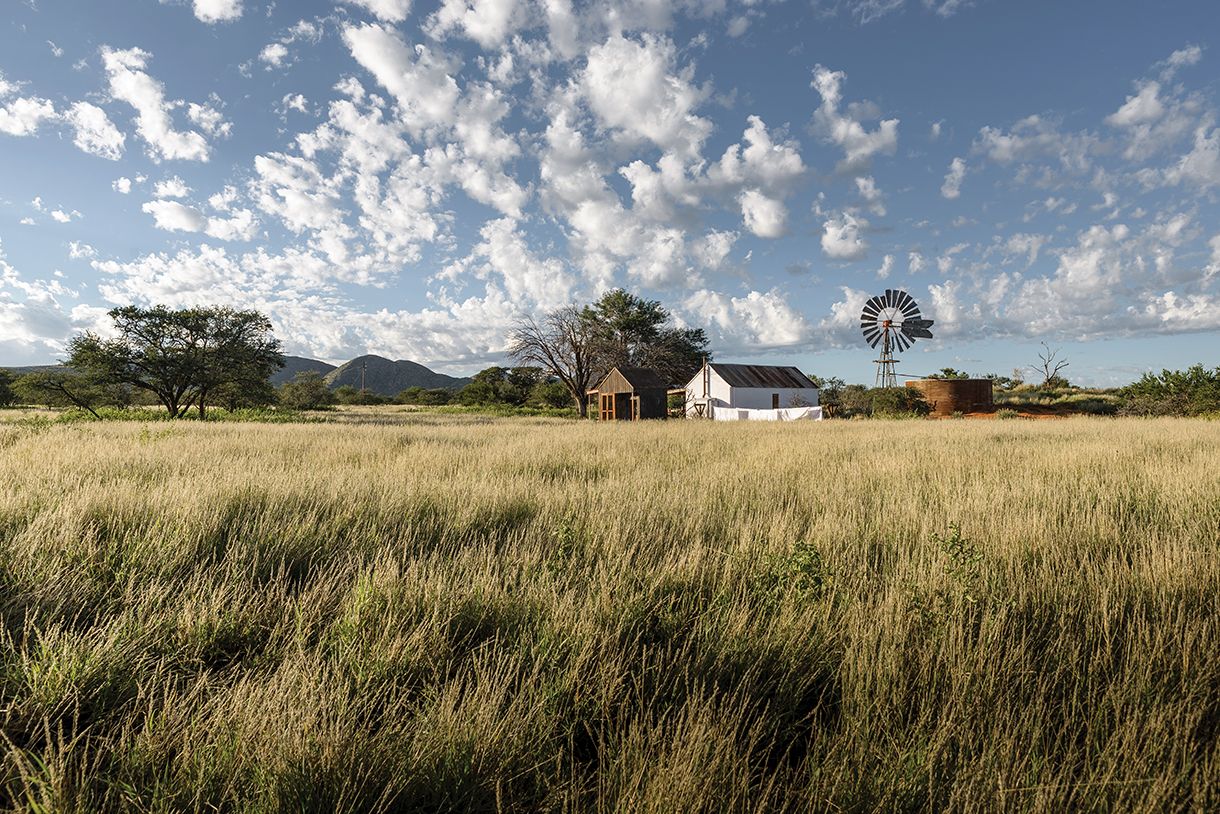
The century-old farmhouse at Klein Jan in Northern Cape, South Africa
Culture
Culinary Adventures
by Bruce Wallin
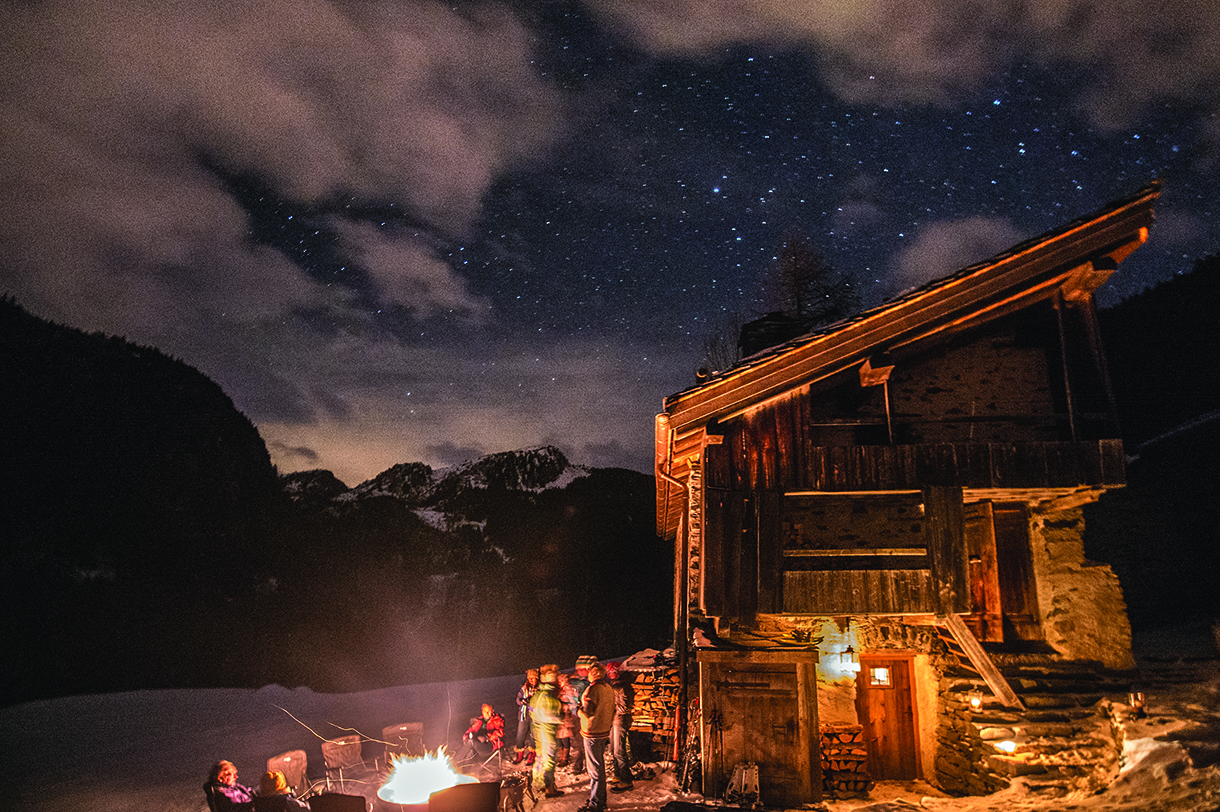
The sheepherder’s hut of Le Crot Alpage in Le Miroir, France
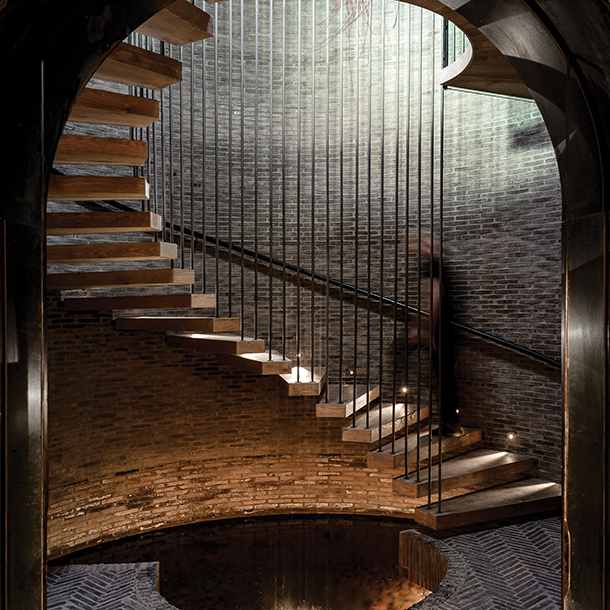
The spiral staircase in Klein Jan’s water tank
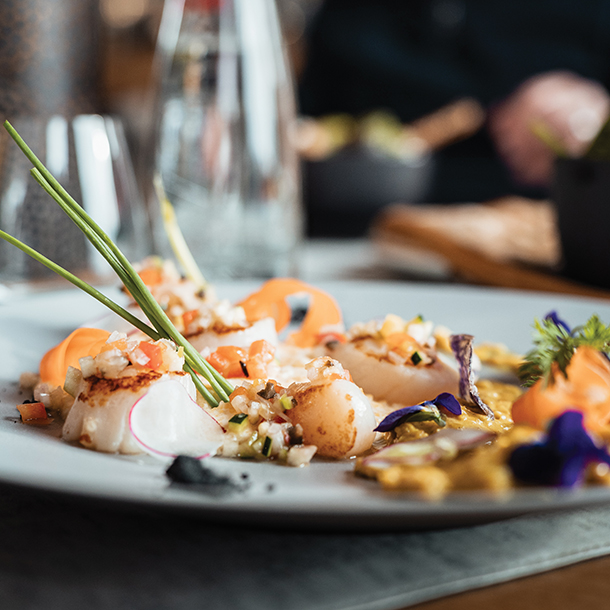
One of Chef Philippe Paillargue’s dishes
Fine Dining Reimagined
If you stop at a popular watering hole on the way to dinner at Klein Jan, don’t get out for a drink. The happy-hour crowd at this particular joint in South Africa’s Tswalu Kalahari reserve can get a bit wild. Your driver, a seasoned safari guide, might pause at the water to point out zebras and black-maned lions before continuing the journey to your final destination: a remote restaurant unlike anything else on Earth.Klein Jan is the creation of Michelin-starred chef Jan Hendrik van der Westhuizen, who was raised on a farm in South Africa’s Mpumalanga province. For those enthralled with his concept, the thrill has only begun. From the Arctic Circle in Norway to the high Andes in Peru, a growing number of adventurous, out-of-the-way culinary experiences are cropping up around the globe. More than just meals, these sensory journeys are expanding the concept of what a restaurant can be—and bringing world-class dining to some of the planet’s most wildly beautiful environments.
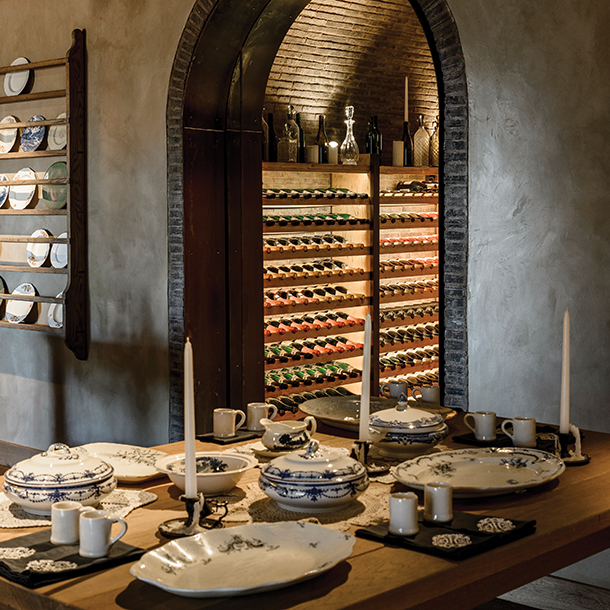
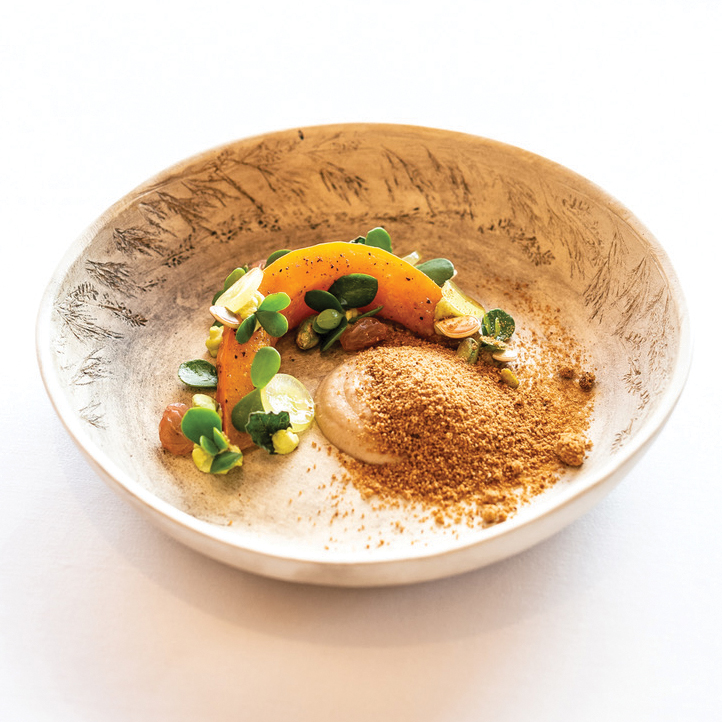
Klein Jan
Northern Cape, South AfricaNothing about the safari experience at Tswalu Kalahari is typical. Adventures through the reserve entail everything from walking with wild dogs on the hunt to studying baby cheetahs with a big-cat biologist. Game drives reveal brown hyenas, pangolins, and other elusive creatures—all in a setting so vast and vividly beautiful that it seems you’ve stumbled upon an Africa from another time. And yet, perhaps no experience at Tswalu is as unexpected as a meal at Klein Jan.
Chef Jan Hendrik’s restaurant is set in and around a century-old farmhouse, one of only a handful of structures in the 281,700-acre reserve (larger than the city of Dallas). Guests staying at one of Tswalu’s three luxury lodges go by safari vehicle to the farmhouse, where their “culinary safari” begins. “The Kalahari is a journey,” says Jan Hendrik. “And that’s exactly what Klein Jan is.”
Diners begin with small bites and cocktails on the farmhouse’s front porch, around an antique wooden dining table. Then, they proceed to the backyard, where a nondescript water tank becomes a portal, opening to a spiral staircase that leads some 15 feet below the Kalahari sands. At the base, an intricately arranged root cellar stretches out with vaulted ceilings, stone floors, and wooden shelves brimming with fresh produce, cheeses, and bottled preserves.
Sampling the seasonally driven delicacies in the cellar is followed by a walk to the cheese-tasting room, anchored by a vintage stove formerly owned by Jan Hendrik’s grandmother. From here, the group enters a sleek dining space that would be right at home in Cape Town or Manhattan. Windows open to the Kalahari outside, and the remainder of the feast unfolds as the Southern sky fills with stars.
The trajectory of the meal reflects the journey of Jan Hendrik, who received his Michelin star—the first by a South African chef—for his Restaurant Jan in Nice, France. He and his executive chef at Klein Jan, Marnus Scholly, spent two years researching the ingredients and culinary traditions of the Kalahari before opening in 2021. “The Northern Cape surprised us tremendously with pistachios, saffron, camel milk, dried fruits,” Jan Hendrik says.
Klein Jan’s menu focuses on the region’s plant-based bounty, from dates and Kalahari truffles to branches and leaves. Throughout the meal, local staff members—most of whom had never worked in a restaurant before, and many of whom had never eaten in a restaurant before—walk guests through what they are about to experience and why. The elaborate orchestration seems implausible in such a remote setting, but it all comes together in a meal that is memorable both for its multifaceted experience and for the quality and creativity of the cuisine. “To tick those senses of eating and tasting things that you would never have thought even existed,” Jan Hendrik says, “that’s pretty spectacular.”
The drive back to your lodge—in an open-side vehicle, with the stars above and the sounds of the nighttime bush all around—is no less remarkable. tswalu.com
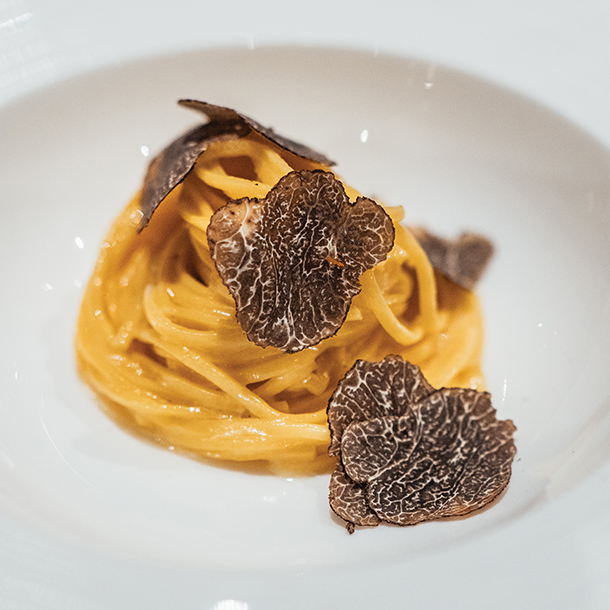
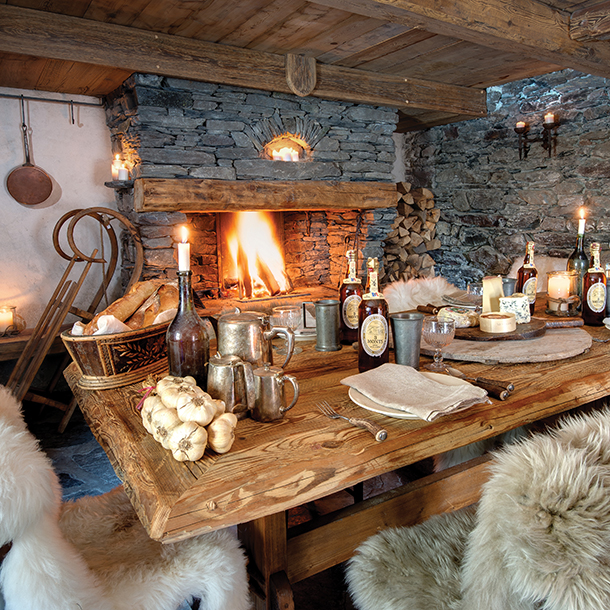
Le Crot Alpage
Le Miroir, FranceThe Le Crot Alpage experience begins with a hike by headlamp up a snow-covered trail, through a high alpine forest known to be populated by wolves. Any feelings of discomfort—numb fingers, shortness of breath, fright at the sound of a snapping branch—are a small price to pay for what awaits you at this century-old sheepherder’s hut.
Set in the backcountry outside the French village of Le Miroir, Le Crot Alpage is open to guests staying at one of two chalets operated by the extreme luxury adventure company Eleven. The chalets’ guides, gourmet chefs, and other staff cater to visitors who, in winter, can ski at nearby resorts like Val d’Isère and Tignes. Summers mean electric mountain biking, canyoneering, river rafting, and hiking through the Tarentaise Valley and beyond.
No matter the season, a dinner at the alpage—about 45 minutes by foot, snowshoe, or ski from the chalets—is in order. Entering the hut (which has no electricity), guests will likely find a crackling blaze in the fireplace and a smaller flame smoldering beneath a fondue pot. This being France, the cheese is fresh from a farmer who lives just down the road and is paired with precisely the right local wine.
The evening will include surprises (parlor games, a costume party perhaps) and a progressive dining experience that involves descending into a candlelit cellar for a multicourse feast courtesy of chef Philippe Paillargue. In an impressive display of strength and efficiency, Paillargue makes the trek to the hut a few hours in advance of the group, hauling all the evening’s ingredients on his back.
One thing chef Paillargue does not carry, but will inevitably coax you to sample, is the hut’s resident jeroboam of génépi. A local staple, the herbal liqueur is sure to warm you up for the long walk back to your chalet. elevenexperience.com
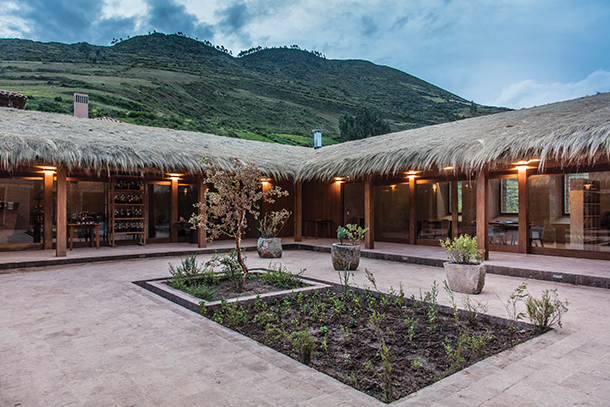
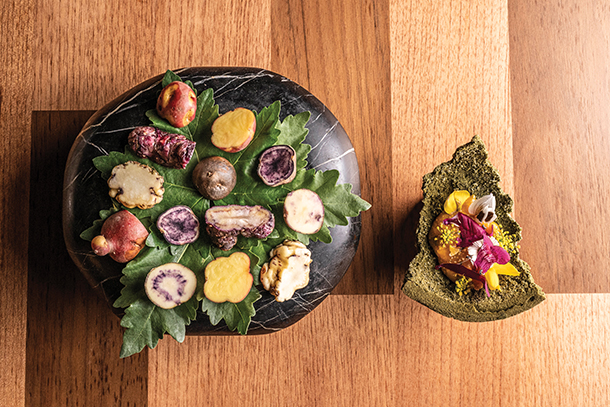
MIL
Sacred Valley, PeruChef Virgilio Martínez’s Lima flagship, Central, ranked No. 1 among the World’s 50 Best Restaurants in 2023. That honor owes much to the fact that Martínez and his head chef and wife, Pía León, are masters at crafting multisensory stories about their home country of Peru. Now at MIL, their lunch-only outpost located 11,500 feet above sea level in the Sacred Valley, they’ve created a one-of-a-kind culinary journey through the country’s Andean culture.
The MIL Immersion experience is a half-day, $620-per-person adventure through Incan history and Andean cuisine—one in which you visit the communities that contribute every element of the eight-course tasting menu. The day starts at 9:30 a.m. with a trip to the terraced ruins of Moray, which some believe to be an early Incan farming experiment. Next, you head to the fields to meet vegetable farmers, traverse the hillsides with a botanist, visit Mater—MIL’s gastronomy research lab that collaborates with local artisans—and then sample a variety of spirits and other beverages made with indigenous ingredients. Your final stop, at 12:15 p.m., is lunch at MIL restaurant.
Locally made wooden vessels and textiles adorn the tables at MIL, where the eight courses might incorporate native potatoes, maize, alpaca, and chocolates handcrafted from native Cusqueñan cacao. The pace of the meal is intentionally deliberate, encouraging you to slow down and absorb not just the flavors you are tasting but the high-Andes traditions and ecosystems that made them possible. milcentro.pe
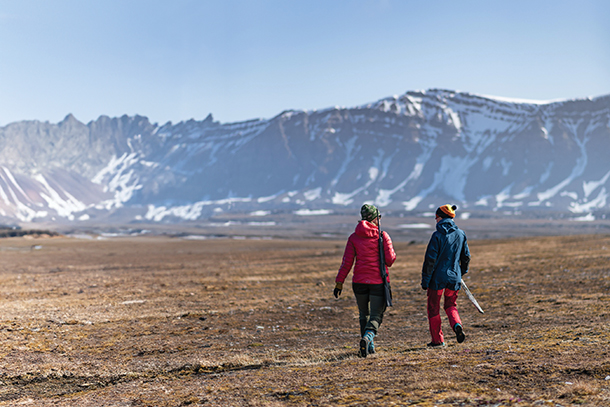
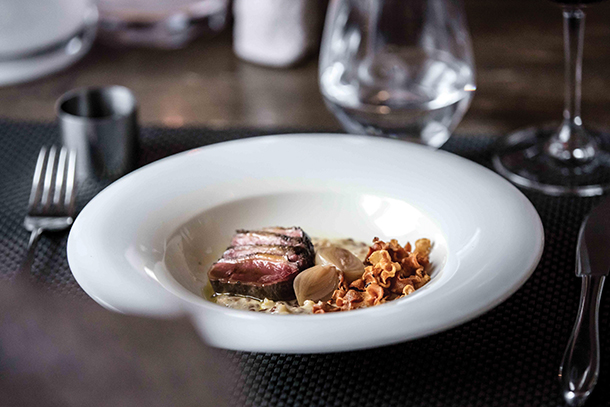
Isfjord Radio
Svalbard, NorwayHidden high above the Arctic Circle, at one of Europe’s northernmost points, Norway’s Isfjord Radio Adventure Hotel is reachable by boat in summer and dog sled or snowmobile in winter. Though far from the nearest man-made road, the 22-room outpost sits along a wildlife corridor popular with the region’s 3,500 roving polar bears—a presence that requires guests to be accompanied by armed guards when outside.
Visitors who make the trek to the hotel, set in a former radio station from 1933, can come across polar bears and other members of Svalbard’s “Big 5” (walrus, Arctic foxes, blue whales, and reindeer) on hiking, boating, snowmobiling, and dog-sledding excursions. The adventure continues at night with meals that have made Isfjord Radio, like an Arctic version of a French auberge, a destination for its food alone.
The restaurant’s menu is largely dictated by whatever local anglers, trappers, and foragers—many of the restaurant staff among them—can find. You might savor wild mushrooms from the tundra, dried seaweed collected from the Arctic Sea, freshly caught cod and Arctic char, and smoked seal, ptarmigan, reindeer, and other game procured by the last three traditional hunters and trappers still living in Svalbard. Preserving methods such as curing, smoking, drying, and pickling are also essential to Isfjord Radio’s larder, as they have been to generations of inhabitants in this extreme environment at the top of the world. basecampexplorer.com
Photo Credits: Courtesy Images From Top: Klein Jan/Adriaan Louw (5); Eleven/Yann Allègre (4); Mil (2); Isfjord Radio Adventure Hotel (2)




